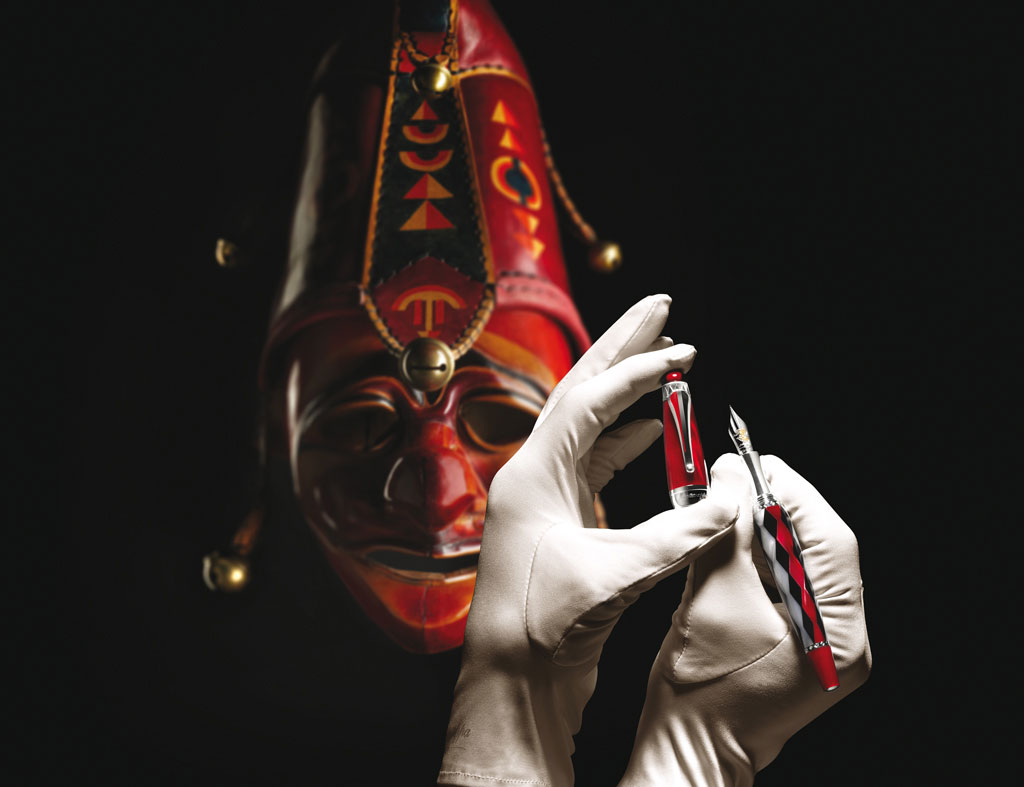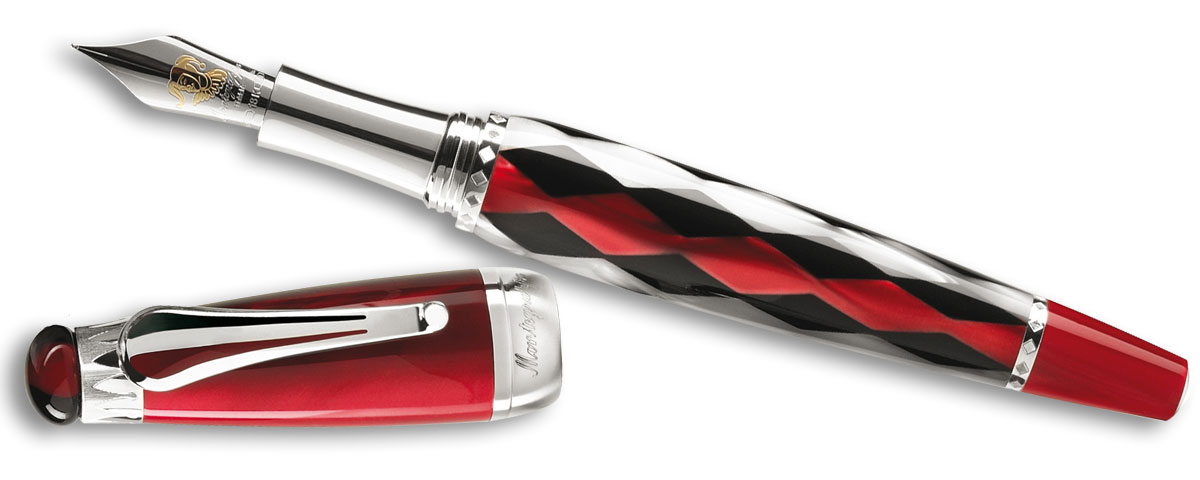
A musician, a poet, an actor, an acrobat… the art of storytelling includes different talents, narrative techniques embodied in a pen that recalls a well-known historical character of French courts: the jester. This figure, universally known by his loud colours in clothing and the bizarre shapes of his ornaments, is not to be reduced to a simple clown, though, yet to be considered a professional storyteller and entertainer. To do him justice over time were distinguished Italian writers like Cielo D’Alcamo and famous composers like Giuseppe Verdi, who celebrated the jester in his Rigoletto.
To the Rigoletto’s jester was eventually inspired Rigoletto by Montegrappa, a pen available in the version of fountain pen and rollerball, both in limited editions, as a homage to the storyteller’s talent.
A must for all those who put art and creativity into their writing: you can find this precious pen in Giardino Italiano‘s on-line store.
The jester and the art of storytelling
The word Jester comes from joglar, an Occitan-Provencal word deriving in turn form latin iocularis (jocular, facetious). These comprehend all the people in modern age making a living out of telling stories in public, using different narrative techniques. They were actors, mimes, musicians, dancers and acrobats. They often were educated men, clerics or tramps that loved to tell stories inspired to their own travels or to true happenings from afar.
For this reason, jesters have more recently been upgraded to true writing professionals that could make a living from their art, and which had a crucial role in the spread of news, ideas, and the flourishing of performing arts and entertainment. These storytelling professionals were indeed able to embed different metric forms in a variety of literary genres, besides reporting true stories and telling on politics under the guise of harmless tales.
The jester, in short, was a satyr, a journalist, a writer and a singer altogether… he is an emblem of creativeness to its utmost degree.
Rigoletto by Giuseppe Verdi
Rigoletto by Giuseppe Verdi is an opera in three acts based on the play Le roi s’amuse by Victor Hugo. As the original title well suggests, the story is centred on the character of court jester Rigoletto, who tells on debaucheries of the early Ninenteenth century French court by his playful storytelling.
It’s not by chance that the play, both in its original version by Hugo and in Verdi’s version later, was censored several times.
Rigoletto thus becomes the herald of modern journalists, lucidly and cleverly reporting social tensions and subordinate female condition of his times, and censorship coming after his reporting. It’s a topical story.
Rigoletto by Montegrappa: creativity at hand
Inspired by the creativity of Verdi’s jester, Rigoletto by Montegrappa homages both the great Italian composer and the characters in his opera.
The pen’s design unmistakably reminds of a jester wearing an harlequin costume in a pattern of white, red and black diamond shapes. The mosaic effect in the pen’s body was created by the diffusion bonding technique, while details and trims are in sterling silver.
The top of the cap mounts a handmade black and red “murrina” to recall the puffy sleeves and trousers of the jester’s outfit, while the clip is shaped according to his footwear.
Also, the sterling silver cap’s ring is in the shape of a short skirt ending in triangles holding bells.
The nib of fountain pens is in 18 k solid gold.
Rigoletto by Montegrappa is a limited edition, available in 900 fountain pens and 900 roller pens only. You can buy yours at Giardino.it.

